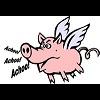Squish you squish me
Announcements
-
Similar Content
-
Latest Posts
-
I've got a spare standard box sitting in the garage I know it will come one day though, but it's driven pretty tamely on the four times a year it gets out...
-
Big question… have you decided on a gearbox? Because it’s going to come… and a gearset ain’t going to do the job. save your pennies 🤪
-
it was good to see our presence at GTR festival..hope to see more SAU at these events
-
Thanks for the quick replies guys its appreciated. A small extension was welded onto the standard 6boost external gate pipe which you can see where the pipe goes from black to stainless just below and to the right of the rear housing in the first picture. Overall I would say the flow is pretty good other than 6boosts choice to come straight off the collector at a decent angle.. Not sure why I went with two valves, I originally replaced the stock twin bovs with the GFB when I had the twins on. When I purchased the EFR it came with the Turbosmart Kompact BOV so I figured that would be a better option than the stock EFR Bov. I don't believe the Turbosmart BOV is adjustable? When I get the spike and then sudden dip in boost pressure, the turbo speed does drop as well. Stock head size wise however I believe it has Neo Turbo springs and a Neo Turbo intake camshaft and an aftermarket exhaust camshaft in the vicinity of 260 degrees. We didn't try a different MAC valve, we tried two different ways of plumbing it and we also tried removing the mac valve entirely and just having the boost source from the turbo directly connected to the wastegate and it still spiked / dropped and exhibited the same behaviour. Standard R33 GTR 5 speed tansmission. I'm running a Haltech Elite 2500 and can provide some logs if you. I understand what you're saying in that it looks like an auto plot however no, it's still a manual and it just has a lot of torque down low, for all intents and purposes it's a very impressive street car. I've attached a photo of the quickbitz dyno plot which was when the only difference is I was running -5 twin turbos with a mac valve. As you can see theres a decent dip in AFRs between 125kmh and 135kmh. Our problem now is not that the AFRs are dropping, just the boost pressure is dropping, however it is evident in the same RPM range of the map, coincidentally or not.
-







Recommended Posts
Create an account or sign in to comment
You need to be a member in order to leave a comment
Create an account
Sign up for a new account in our community. It's easy!
Register a new accountSign in
Already have an account? Sign in here.
Sign In Now